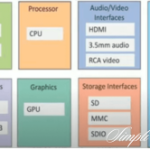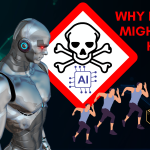IoT Enablers: Driving the Future of Connected Technology
Introduction
The Internet of Things (IoT) is revolutionizing industries by connecting smart devices, enabling automation, and enhancing decision-making through real-time data analysis. However, the seamless functioning of IoT systems depends on various IoT enablers, which include technologies and frameworks that drive connectivity, security, data processing, and analytics. In this blog, we will explore the essential enablers that make IoT successful and efficient.
1. Cloud Computing: Scalable IoT Infrastructure
Cloud computing plays a crucial role in IoT by offering scalable storage, processing power, and analytics. Key benefits include:
- Real-time data storage and analysis to support decision-making.
- AI-powered insights for predictive maintenance and automation.
- Remote access and monitoring, enabling seamless control from anywhere.
- Cost-effectiveness, eliminating the need for heavy local infrastructure.
2. Edge Computing: Processing Data Closer to the Source
Edge computing enhances IoT performance by processing data near devices instead of relying solely on the cloud. Advantages include:
- Reduced latency for real-time decision-making, crucial in healthcare and industrial IoT.
- Lower bandwidth consumption, optimizing network performance.
- Enhanced security by reducing the risk of cyber threats in data transmission.
3. 5G and LPWAN: Enabling High-Speed and Long-Range Connectivity
IoT connectivity depends on efficient network technologies, such as:
- 5G Networks: Offering ultra-fast, low-latency connections for industrial automation, smart cities, and healthcare.
- LPWAN (LoRa, NB-IoT): Providing long-range, low-power communication suitable for agriculture, asset tracking, and environmental monitoring.
- Wi-Fi 6 and Bluetooth 5.0: Supporting high-speed, short-range device interactions.
4. Artificial Intelligence & Machine Learning: Enhancing IoT Intelligence
AI and ML integrate with IoT to automate processes and improve efficiency. Applications include:
- Predictive maintenance, reducing downtime in industries.
- Anomaly detection, enhancing security by identifying unusual behavior.
- Smart automation, enabling self-learning IoT devices to adapt to user patterns.
5. IoT Security Frameworks: Safeguarding Connected Devices
With billions of devices connected, security is a top concern. Essential security measures include:
- End-to-end encryption, ensuring data protection in transit and at rest.
- Blockchain technology, providing tamper-proof transactions and secure device authentication.
- Identity and access management (IAM) to regulate device permissions and prevent unauthorized access.
6. Big Data Analytics: Turning IoT Data into Insights
IoT generates vast amounts of data that must be analyzed effectively. Big data analytics helps in:
- Identifying trends and patterns for business intelligence and optimization.
- Enhancing predictive capabilities to improve decision-making in sectors like healthcare and logistics.
- Personalizing user experiences, optimizing IoT applications in smart homes and wearables.
7. Standardized IoT Protocols: Ensuring Seamless Communication
Interoperability is critical for IoT devices from different manufacturers. Standardized protocols include:
- MQTT (Message Queuing Telemetry Transport): Lightweight messaging for IoT communication.
- CoAP (Constrained Application Protocol): Optimized for low-power devices.
- HTTP/HTTPS: Used for web-based IoT applications and API integrations.
The success of IoT depends on key enablers like cloud computing, edge computing, 5G, AI, security frameworks, and standardized protocols. These technologies help drive innovation, improve efficiency, and enhance security in connected ecosystems. As IoT continues to evolve, advancements in these enablers will shape the future of smart industries, homes, and cities.



